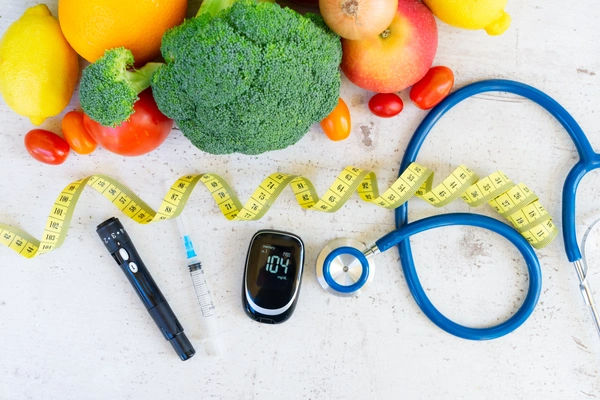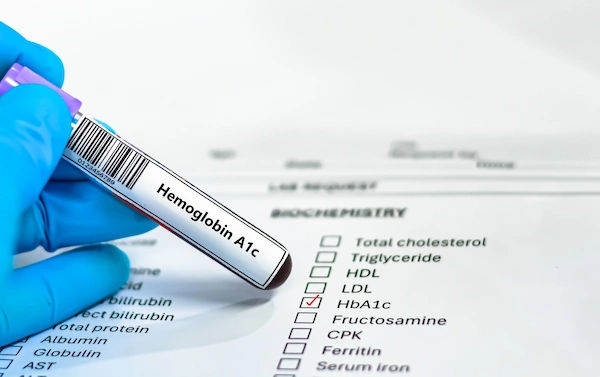Effective Exercises for Diabetes Prevention: A Comprehensive Guide
A proper exercise plan can help lower the risk of diabetes and improve overall health. This comprehensive guide covers effective exercise plans and practical fitness tips that can help prevent diabetes.

Written by
Last updated on 3rd Jul, 2025
A person is diagnosed with diabetes when the blood sugar or glucose level in the body is too high. Diabetes is a chronic disease common among the masses and can affect people of all ages. It is caused when the pancreas fails to produce enough insulin or when the body fails to utilise the insulin produced by the pancreas effectively.
However, a proper exercise plan can help prevent diabetes and improve overall health. This article explains how physical activity helps reduce the chances of this chronic disease and its impacts on a person's physical and mental well-being.
Role of Exercise in Diabetes Prevention
Regular exercise or physical activity has enormous health benefits:
It helps maintain a healthy body weight and improves metabolism.
It helps to improve the body’s sensitivity towards insulin and reduces blood sugar levels.
A moderate but regular exercise routine helps to lower the risk of diabetes. Studies have shown that performing regular physical exercises can help reduce the risk of diabetes by up to 58% in people with prediabetes.
A meta-analysis examination, including 505,045 participants, found that there was a 112% greater relative risk of diabetes associated with large vs small amounts of television time (typically differing by a few hours per day).
Types of Exercises for Diabetes Prevention
Physical exercise is an effective way to regulate blood glucose and lower the risk of diabetes. All forms of exercise improve health and ensure healthier organ functioning, such as:
Aerobic exercises like cycling, running, and walking increase heart rate and breathing. They also regulate blood glucose levels by reducing insulin resistance.
Resistance exercises, such as weight training or workouts with resistance bands, help increase muscle mass. They also improve insulin sensitivity by regulating blood sugar levels as muscles uptake glucose.
Flexibility exercises like yoga, stretching, and pilates improve mobility, ensuring overall mental and physical well-being.
High-intensity interval Training (HIIT) consists of four to six types of high-intensity exercises, with one-minute intervals for rest and recovery. Each exercise session lasts 10 minutes. HIIT increases breathing rate and improves insulin sensitivity.
Creating a Personal Exercise Plan
After assessing health metrics, creating a personal exercise plan can help individuals incorporate physical activity into their lifestyle. To develop a plan that aligns with their fitness goals, individuals should follow these steps:
Begin with a comprehensive health or full-body checkup to assess fitness levels.
Complete any recommended blood tests and scans as advised by a physician.
Monitor common health metrics, such as blood pressure levels and Body Mass Index (BMI).
Set realistic goals initially, starting with small intervals of physical activity.
Choose simple exercises, such as brisk walking, cycling, or a preferred sport, to make the sessions enjoyable.
Start with 20-30 minute sessions and gradually increase the duration.
Benefits of Regular Physical Exercises
Regular physical exercises are important to maintain a healthy lifestyle. They have enormous benefits such as:
A sedentary lifestyle can increase the risk of insulin resistance. Physical activities are the key to improving the body’s response to insulin, and the muscles effectively use the insulin produced to absorb glucose.
Excess body weight can act as a high-risk factor for diabetes.
According to the American Diabetes Association, people with prediabetes should lose at least 7% to 10% of their body weight to prevent disease progression.
Regular physical exercises will aid in weight loss and help maintain a healthy body weight.
Aerobic exercises and HIIT training increase heart rate and breathing. They improve heart health by reducing blood pressure and bad cholesterol levels.
It will improve overall heart health and reduce the complications associated with cardiovascular diseases.
Overcoming Barriers to Exercise
If one is new to an exercise routine, one might face many challenges in maintaining consistency, such as a lack of time, energy, or motivation. People also fear the risk of injury if they are new to gymming or exercising.
Here are a few practical strategies to help one maintain an exercise routine:
Individuals should start with small targets and track progress to see tangible results, which can help maintain motivation.
Joining an exercise group or inviting a friend as an accountability partner can provide daily encouragement.
Rather than intense training, one should begin with simple and enjoyable activities like walking, cycling, or swimming. This approach reduces friction and makes the process feel more manageable and enjoyable.
Monitoring Progress and Health Indicators
After starting an exercise routine, monitoring progress is essential to determine if one is on the right track. They should track their sessions and gradually increase the duration to see effective results.
It is important to understand blood sugar levels and maintain physical activity for at least five days a week. Regular health checkups are necessary to monitor key health indicators. Understanding these metrics helps in customising the exercise plan according to individual fitness needs.
Special Considerations and Safety Tips
Here are some practical tips for ensuring safety and avoiding the risk of injuries:
It is important to take at least five to ten minutes to warm up and cool down properly. Before starting the exercise session, simple stretching should be done to ensure mobility.
After the session, light breathing exercises can help cool down, and a short meditation session can be beneficial.
If not feeling well on a particular day, light stretches and flexibility exercises should be considered.
Exercising in hot or humid conditions can lead to dehydration or dizziness. It’s essential to watch for warning signs such as headaches, nausea, or cramps, and stay hydrated.
The Role of Nutrition Alongside Exercise
Foods rich in fibre promote weight loss and reduce the risk of diabetes. Here are the dietary practices to be followed alongside exercise routine for effective results:
Including fruits, legumes, chickpeas, and lentils in the diet, as they are fibre-rich.
Including leafy greens and cruciferous vegetables like broccoli and cauliflower in the diet. Also, including whole grains like wheat, oats, and quinoa.
A balanced meal should include one-quarter of whole grains, another quarter of high-protein foods, and the other half should consist of fruits and leafy green vegetables.
Conclusion
Regular physical exercise has multiple benefits. It is key to preventing diabetes and keeping one active throughout the day. Incorporating various forms of exercise can make an individual’s routine more fun and effective. Complementary dietary practices are essential to seeing tangible results and improving overall health.
Consult Top Diabetologists
Consult Top Diabetologists

Dr. Ramkumar S
Endocrinologist
13 Years • MBBS, MD, DNB (Diabetes & Endocrinology), DM (Diabetes & Endocrinology), AIIMS Fellow (Diabetes/Insulin Pumps, Sexual Medicine)
Chennai
Apollo Hospitals Greams Road, Chennai
(150+ Patients)

Dr. Utsa Basu
Diabetologist
14 Years • MBBS, MD
Kolkata
Dr Utsa Basu Clinic, Kolkata
(400+ Patients)

Dr. Arif Ahmed
General Physician/ Internal Medicine Specialist
9 Years • MBBS, MD (Genl. Med.)
Kolkata
MCR SUPER SPECIALITY POLY CLINIC & PATHOLOGY, Kolkata

Dr.vishwanath S
Endocrinologist
8 Years • M.B.B.S, MD- INTERNAL MEDICINE, DM Endocrinology
Bengaluru
Apollo Medical Center, Marathahalli, Bengaluru

Dr Abilash Jain
General Physician/ Internal Medicine Specialist
12 Years • MBBS,DNB(FM),MNAMS,FIAMS,CCGMG(GERIATRICS),DGM (GERIATRICS),PGCD(DIABETES,BOSTON UNIVERSITY),FID(DIABETICS UK)CCEPC(PALLIATIVE CARE),CCCC(CRITICAL CARE)
Visakhapatnam
Apollo Clinic Vizag, Visakhapatnam


